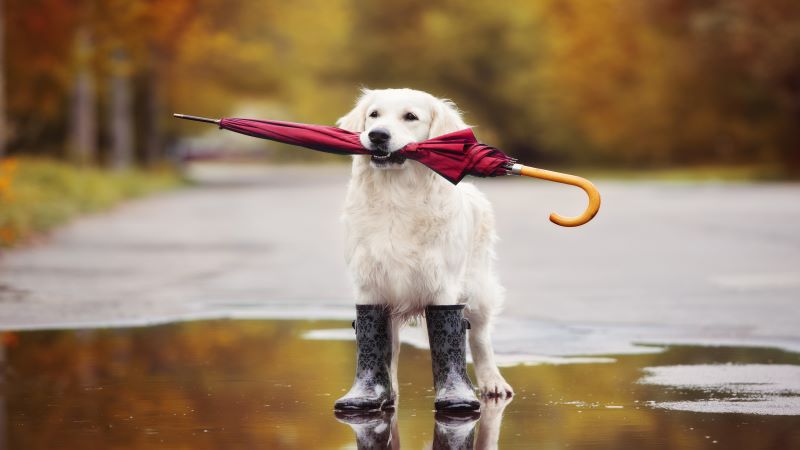When I think of a natural disaster occurring, I think of how I will get my family to safety. I imagine water bottles, snacks, blankets, and medical supplies. This month has put something else at the forefront of my mind. How will I keep my dog safe should disaster strike?
When to Prepare
While September is National Disaster Preparedness Month, there's no time like the present to get started on a disaster preparedness plan for both you and your pets! This is a good time to identify what you would need in order to take care of your pet, should you have to evacuate your house in a hurry. Make a list of the items your pet could not live without, grab a large, preferably clear container, and get to work preparing an emergency kit for your furry child.
What to Include in a Pet Evacuation Kit
Here are some items you don’t want to forget:
- bottled water
- food (at least three days’ worth)
- bowls
- litter
- leash and/or crate
- required medications
- vet records including vaccinations
- current picture and/or description of your pet(s)
- veterinary first aid kit
- security items (bedding or toys to help ease stress)
Where to Store your Evacuation Kit
Once you have packed your container with all these goodies, place it in an easy to reach spot. Mine is on a shelf in our mud room. Easy to reach, but not so accessible that I find myself “borrowing” items out of it when I am in a pinch. I also made a list of the items above on an index card and slipped it in the container so that I can check its contents from time to time, and replenish and/or update as needed.
Preventative Steps to Protect Your Pet
As I try to imagine what it would be like at my house in the event of a flood, or a tornado, or another type of emergency, I picture my sweet dog, Summer, panicked and afraid. She tends to run away or hide in a corner when she is scared. It is a terrible mental image, but one that has driven me to keep a few more things in mind, to make sure I am completely prepared.
- ID your pet. Make sure your pet wears a collar with current ID tags at all times. It’s hard to know how your pet will react in an emergency, and if he runs away, proper identification is important. An even better option is to microchip your pet so he still has identification should his collar and tags fall off.
- Know your pet’s location. Does your pet have a favorite hiding spot when scared? Know where that spot is so you or a family member can retrieve your pet quickly should you need to leave in a hurry.
- Notify others that there is a pet or pets in your home. Emergency personnel should be alerted somehow by a window cling or other notification so that they can account for the animals living in your home.
- Enroll in pet insurance. By keeping your pet enrolled in an accident and illness pet insurance plan, you'll be protected should he get hurt or sick during an evacuation. In addition, you can get reimbursement towards microchipping with a wellness endorsement.
Are you ready to make your Pet Emergency Kit? I can think of no better time than the present. Your four-legged friends will thank you.

